Mugu District (once part of the Malla Kingdom and of the Karnali River Basin) is in the remote northwest part of Nepal, and it is ramping up to be Nepal newest backpacker’s destination in its seldom explored mountains, orchards, lakes and villages.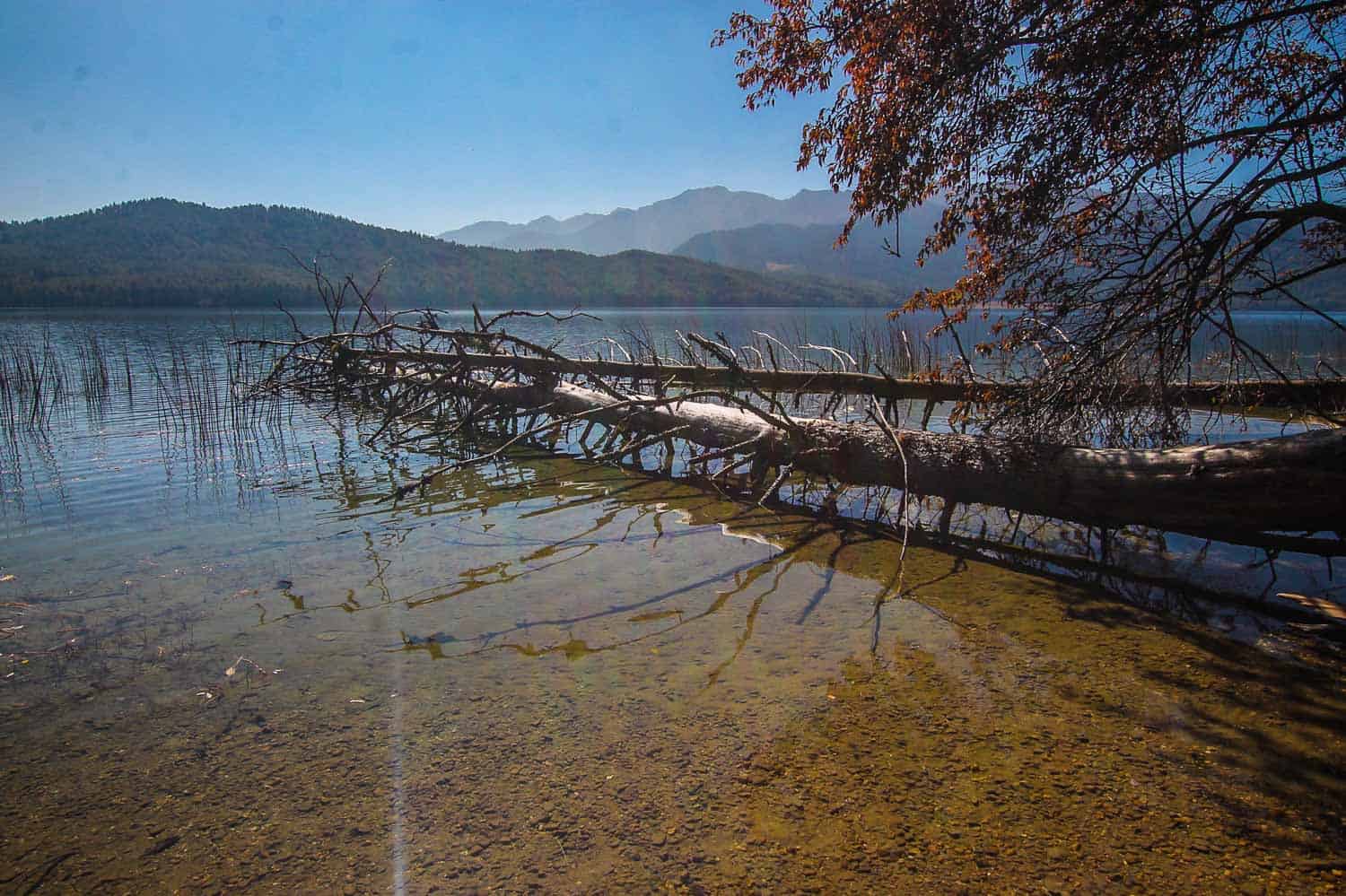
Mugu is the least developed and poorest district in Nepal, and wherever your trekking starting point may be, it is likely time-consuming to get to.
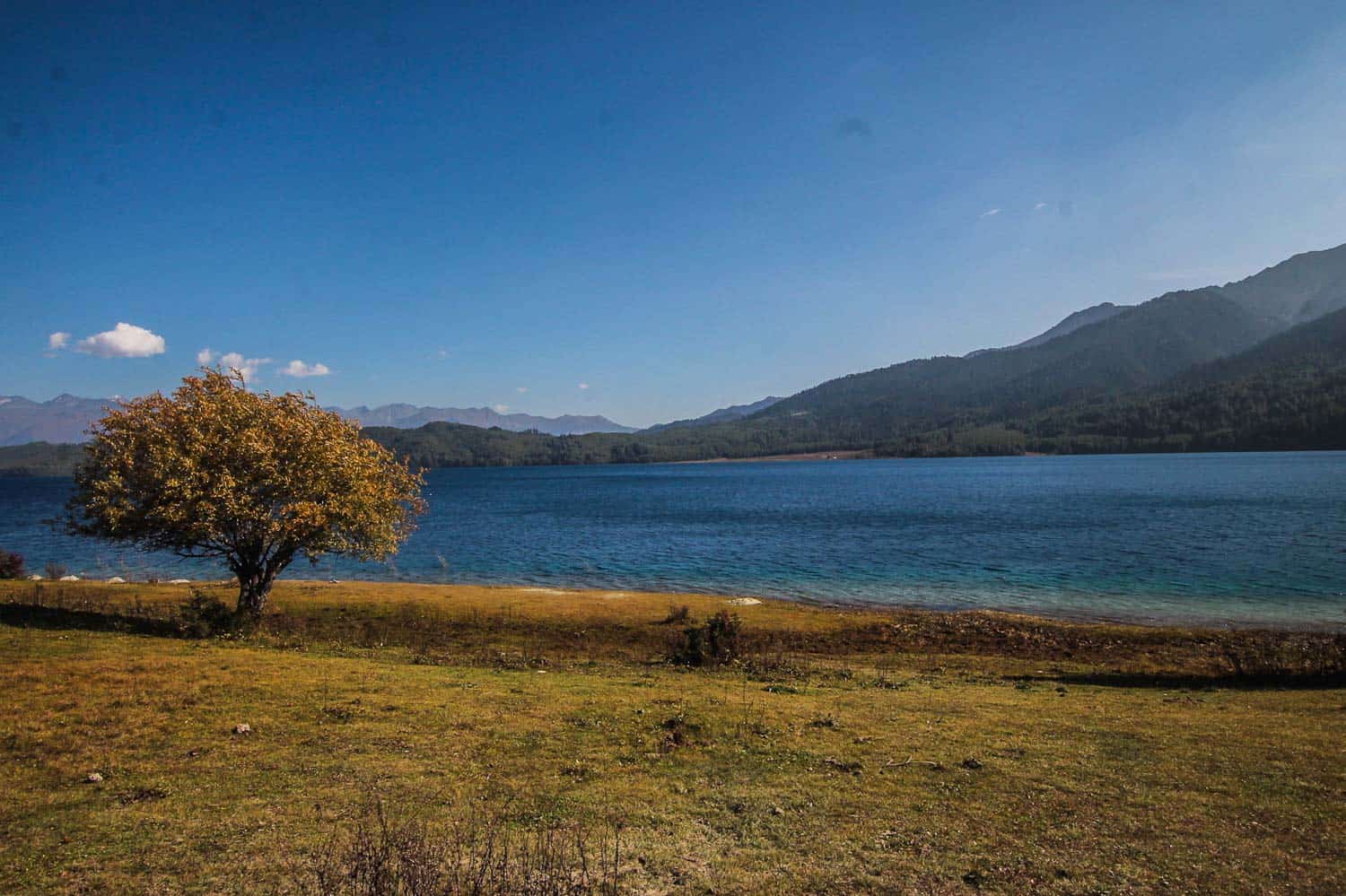
Rara Lake
It either requires two flights from Kathmandu or several days of long uncomfortable bus rides, or a multi-week trek or a mix of all of the above if you so choose.
Throw in a couple of jeeps, and you’ve got yourself a grand adventure! Mugu while remote, is beginning to open up as roads are currently being upgraded and expanded and direct flights may be an option in the near future.
However you get there, and however long it takes you, you will not be disappointed by the beauty, adventure and opportunities for solitude.
Rara Lake (2,990m) itself takes up an area of 10.8 km, and it is the largest lake in the whole Nepal, known locally as Mahendra Taal, or Queen of Lakes.
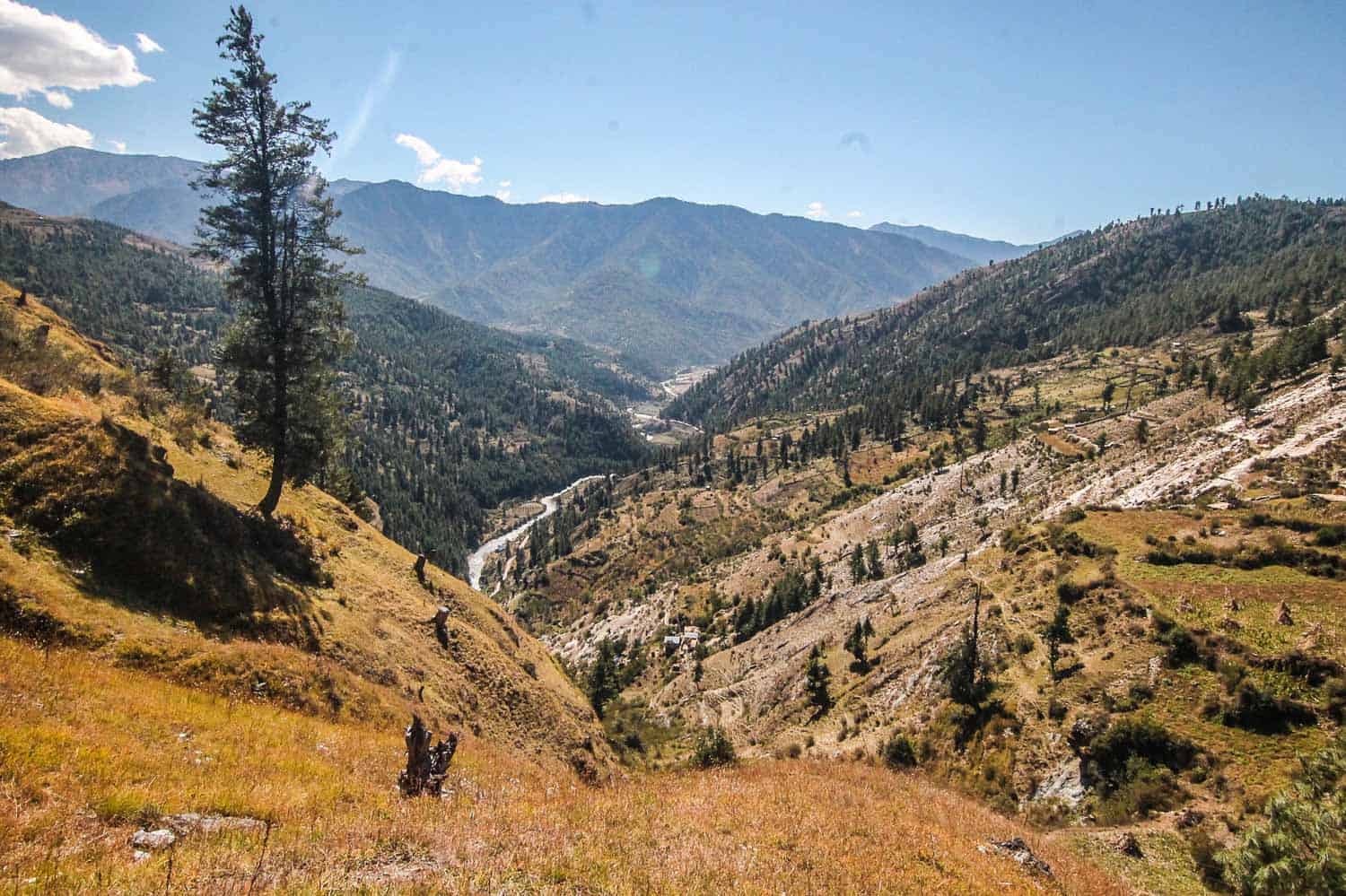
The scenery on the way to Rara Lake
The snow-capped Himalayas featuring Dhaulagiri, Dolpo, Kanjirowa and the Tibetan Himalayas is starkly different from that of the rest of Nepal and for those looking for an ‘off the beaten path’ trek that allows for a unique and authentic Nepal trekking experience, Rara Lake Trek might be the right fit for you.
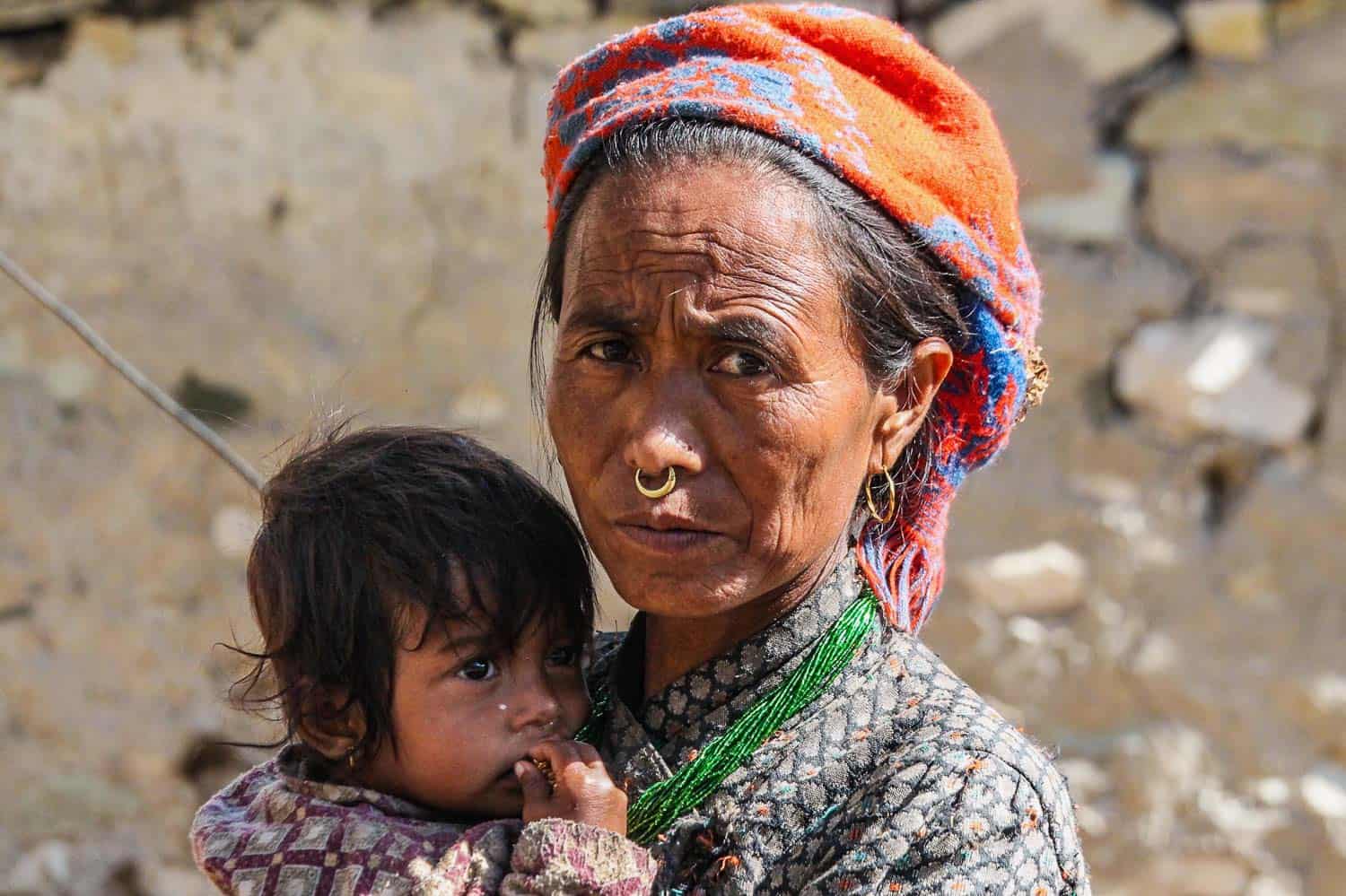
local in Mugu District in north-west Nepal
How To Get To Rara Lake.
There is no direct flight from Kathmandu to Rara Lake – you must fly to Nepalgunj first and then from Nepalgunj to Jumla or Talcha.
To Rara.
BY PLANE: (Flights are around $150-200)
1. Kathmandu or Pokhara to Nepalgunj [60 mins]
2. Nepalgunj to Talcha (closest airport to Gamghadi to begin the five-hour trek to the lake) [35 mins]
3. Nepalgunj to Jumla ( four-days walk to Rara Lake) – takes about 35 minutes.
BY BUS to Rara: (Bus tickets vary based on where to and how many buses you will need)
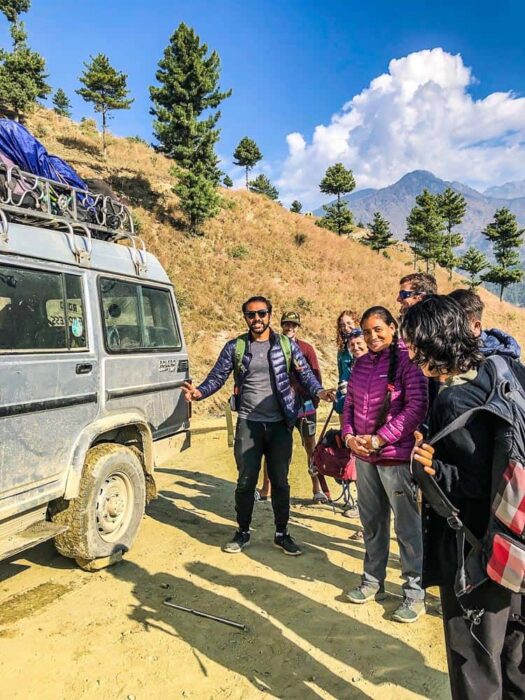
local transportation
1. Kathmandu to NEPALGUNJ: $12 USD [8-10 hours]
2. POKHARA to NEPALGUNJ: (count on delays and unpredictability; our scheduled departure time of around 2 pm but left a couple of hours later overflowingly full. Journey time is anywhere between 15 – 18 hrs) – $12
3. NEPALGUNJ to GAMGHADI: (no buses available – flights best bet but you may be able to find a shared jeep if you ask around upon arrival)
4. NEPALGUNJ to JUMLA:(can be done by shared jeep for 2000 NPR/18 USD taking 9-12 hours –Buses go, but fares and services are unknown – inquires at the Nepalgunj airport can be made.
5. JUMLA to GAMGHADI: local buses take most of the day (upwards of 12 hours) because of the many stops – you are better off taking a shared jeep with the locals to get there in half the time. Buses and jeeps to Gamghadi leave from the airport in Jumla.
PRIVATE JEEP: (this will have to be negotiated once you arrive but hiring a jeep is around 20000NPR/$170USD and individual prices will depend on the size of your group).
This can get you anywhere if you are willing to pay for it. Jeeps sometimes can’t get past certain obstacles along the way, and you end up switching from jeep to jeep until you get there, but if you’ve got a big enough group, it might be worth it.
Jeeps are often hired from Nepalgunj to drive the remainder of the way instead of flying.
Do I Need A Guide To Visit Rara Lake?
No. There are guides available for those who want them; you will find various companies who will put together your itinerary from Kathmandu and take care of all the flight bookings or you can hire a guide that will start from Jumla.
However, on a budget, or in the spirit of solitude, you can also trek this independently and/or camp if it is preferable.
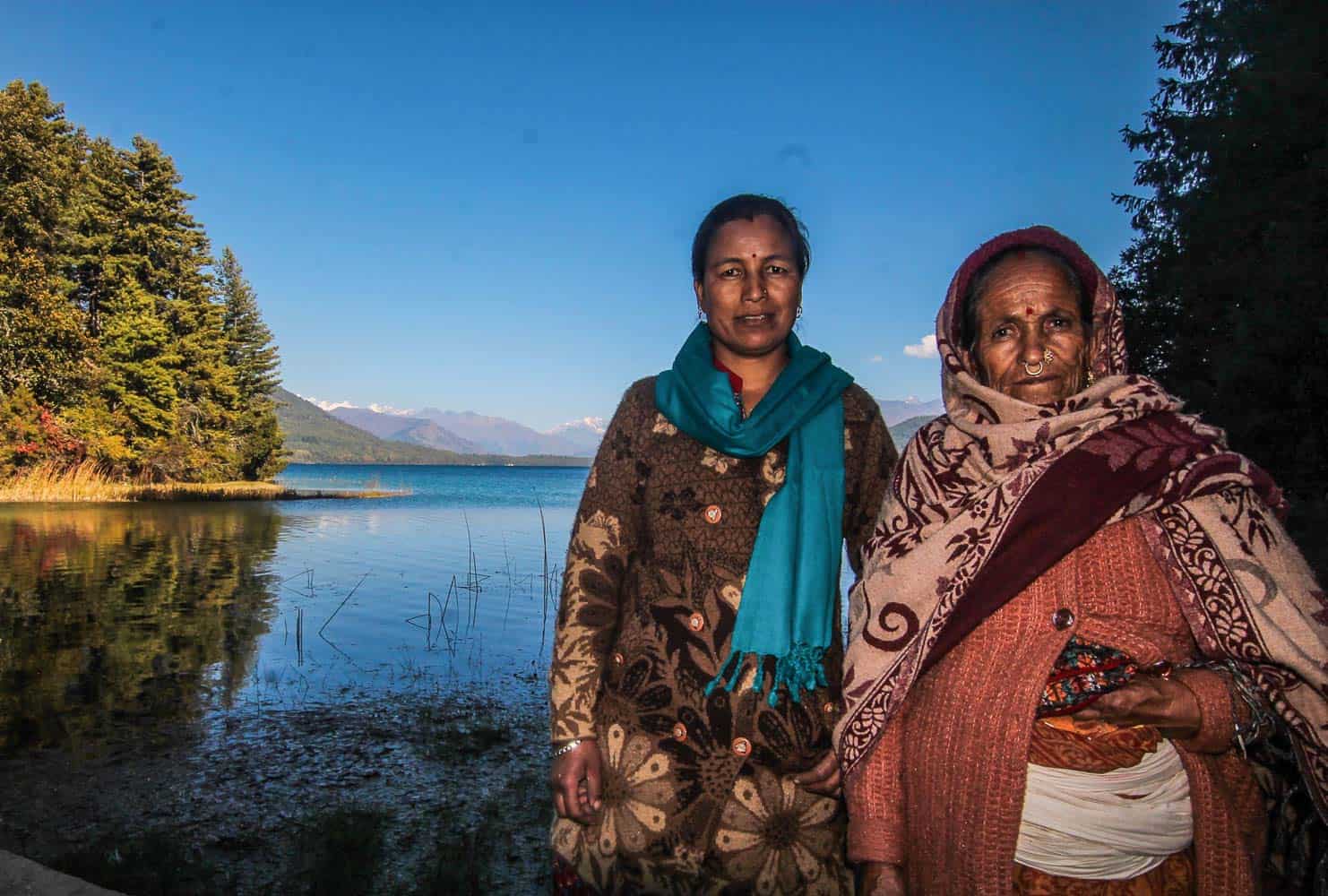
Locals in front of Rara Lake
How long is the trek to Rara Lake?
Rara Lake Trek can take anything from 4 days to more than two weeks. While the trek is not too long, the overall trip may be as getting to and from starting/ending points can be time-consuming.
The trek’s duration also depends on how fast or slow you hike and how many rest days you would like to add-in.
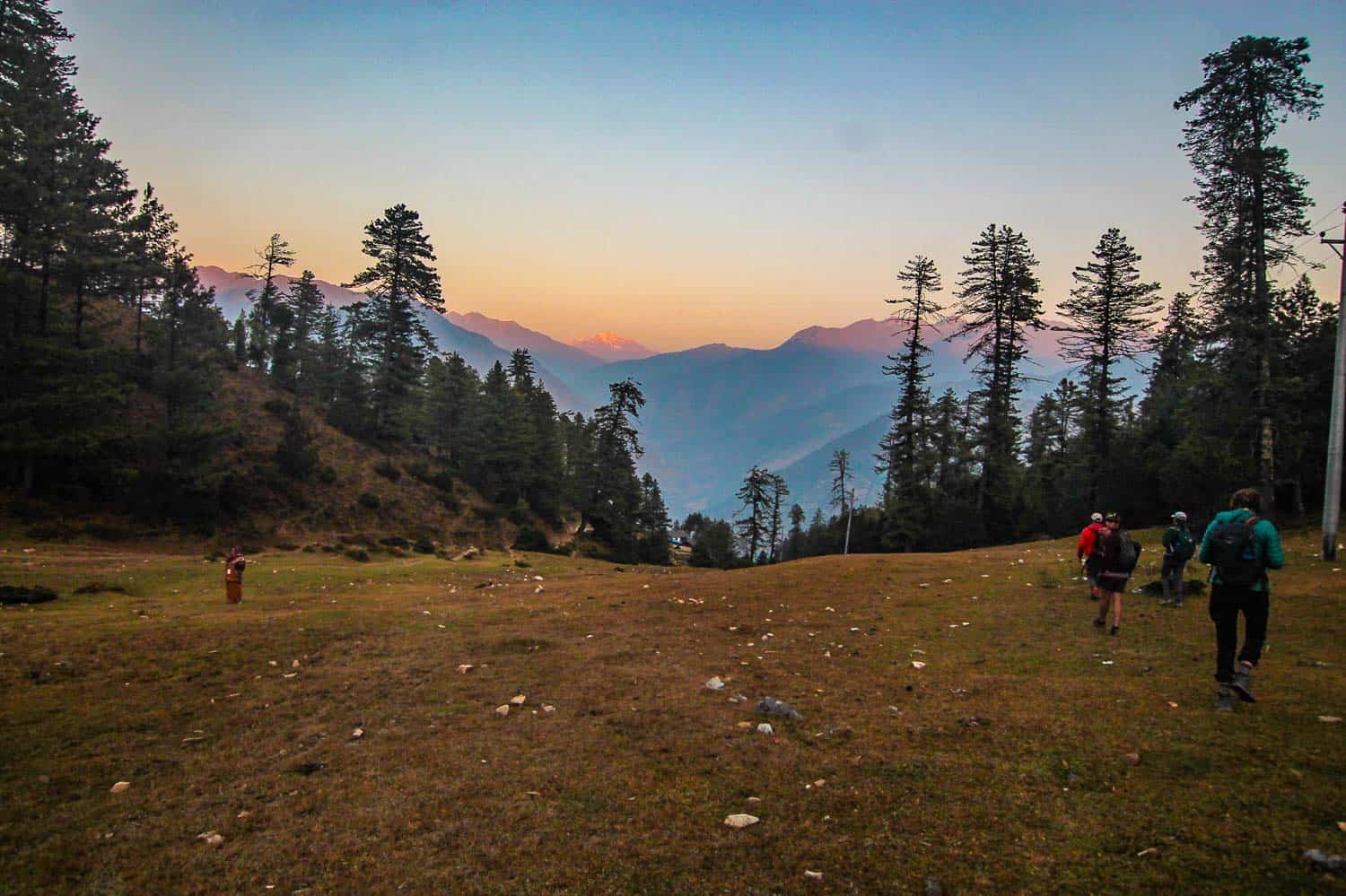
On the way to rara lake
Campers may have an advantage in being able to hang back or push ahead because of their lack of need for accommodation. Overall duration will depend on personal preference and hiking times.
Is the trek to Rara Lake difficult?
Rara Lake Trek is not difficult nor is it long, appropriate for any level of the trekker and with a requirement of a basic level of fitness.
If you have no previous trekking experience, this is a good choice for you. For those who want more of a challenge and have the time, there are plenty more trails you can add on to challenge yourself and expand the experience.
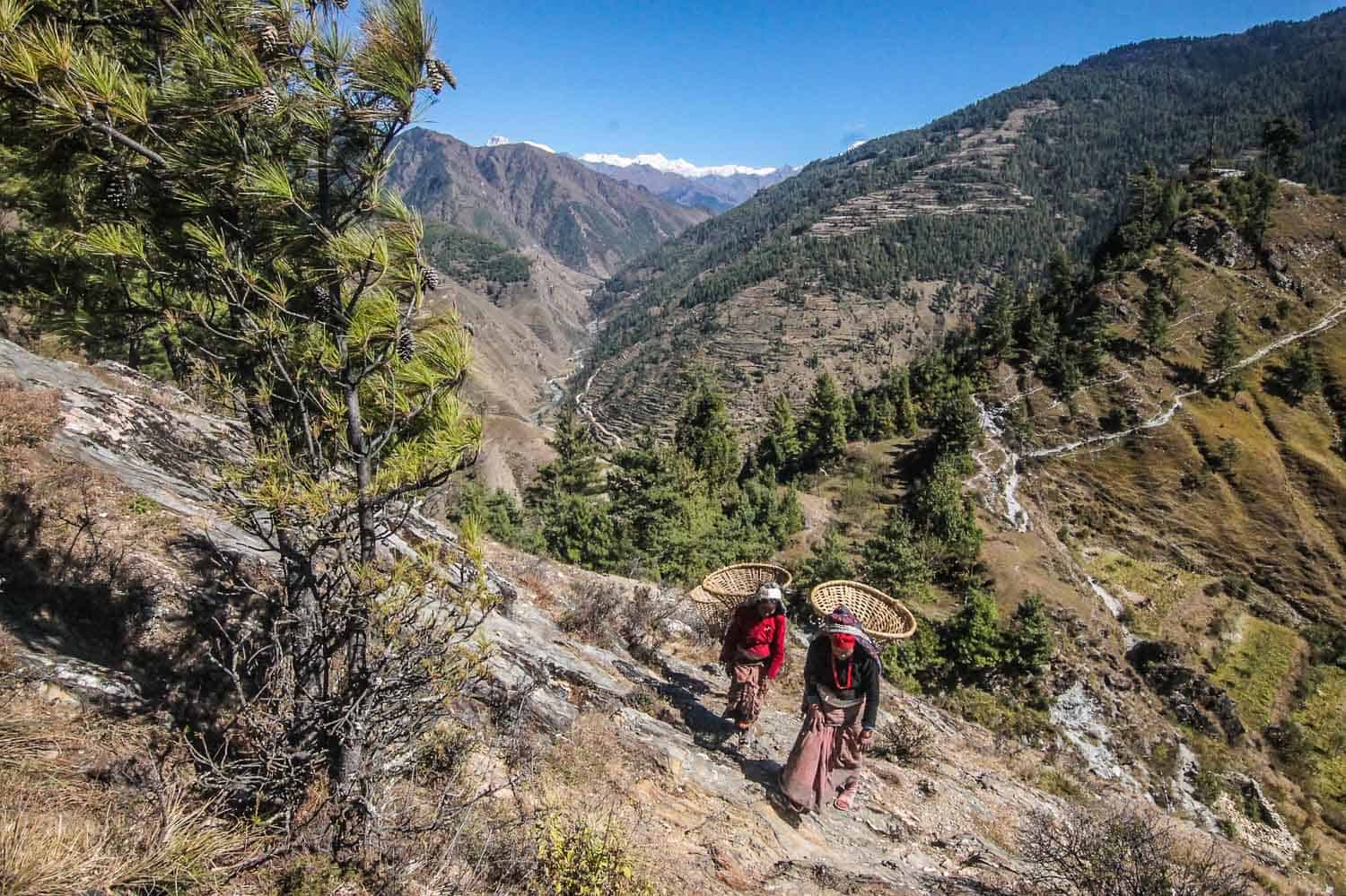
Nepali flat,
When´s the best time to visit Rara Lake?
1. September and October: These Spring months offer a cool, breezy climate and pleasant misty views. I arrived at the end of October and at the beginning of November. It was warm enough to jump in of the water (though I didn’t stay in long) and the weather was refreshing.
2. April and May: This is hitting the summer months where the weather is clear and sunny, making it a more predictable trekking environment.
March is also a good time to go, and during any of these three summer months, the weather will be pleasant, and the Himalayan views reflected in the lake are spectacular. You can count yourself even luckier if you arrive during the rhododendron blooms around the lake.
WHAT IS THE GENERAL COST?
Depending on the quality of your guide and the level of comfort you are looking for, the trek would cost you anywhere between 190,000NPR/$1600 to 270000 NPR/2300USD. However, if you are doing it independently, it will be significantly cheaper.
At Rara Lake there are only two guest houses and the rooms are well maintained; they are right at the water’s edge, which is nice. A room here costs you about $12-15 USD.
Rooms leading up to Rara will be the same price or cheaper and rooms in Talcha where most fly into are $10 and plenty of availability. Likewise, if you end up in Gamghadi The number of people in your party and the time of year will affect the cost.
Altogether food and accommodations will cost you approximately 22 USD/day/person, and this includes meals, rooms and snacks.
Without a guide and depending on the level of your comfort and whether you are camping or staying in various qualities of guesthouses, the price will vary greatly.
WHAT ARE THE FOOD + ACCOMMODATIONS LIKE?
There are few facilities for tourists, but the villages listed in the itinerary will have tea houses in which the accommodations and meals are very basic – dal bhat is always your best bet, though you can get some excellent fries and masala chi at the lodges around the lake. Showers and toilets are scarce so prepare accordingly.
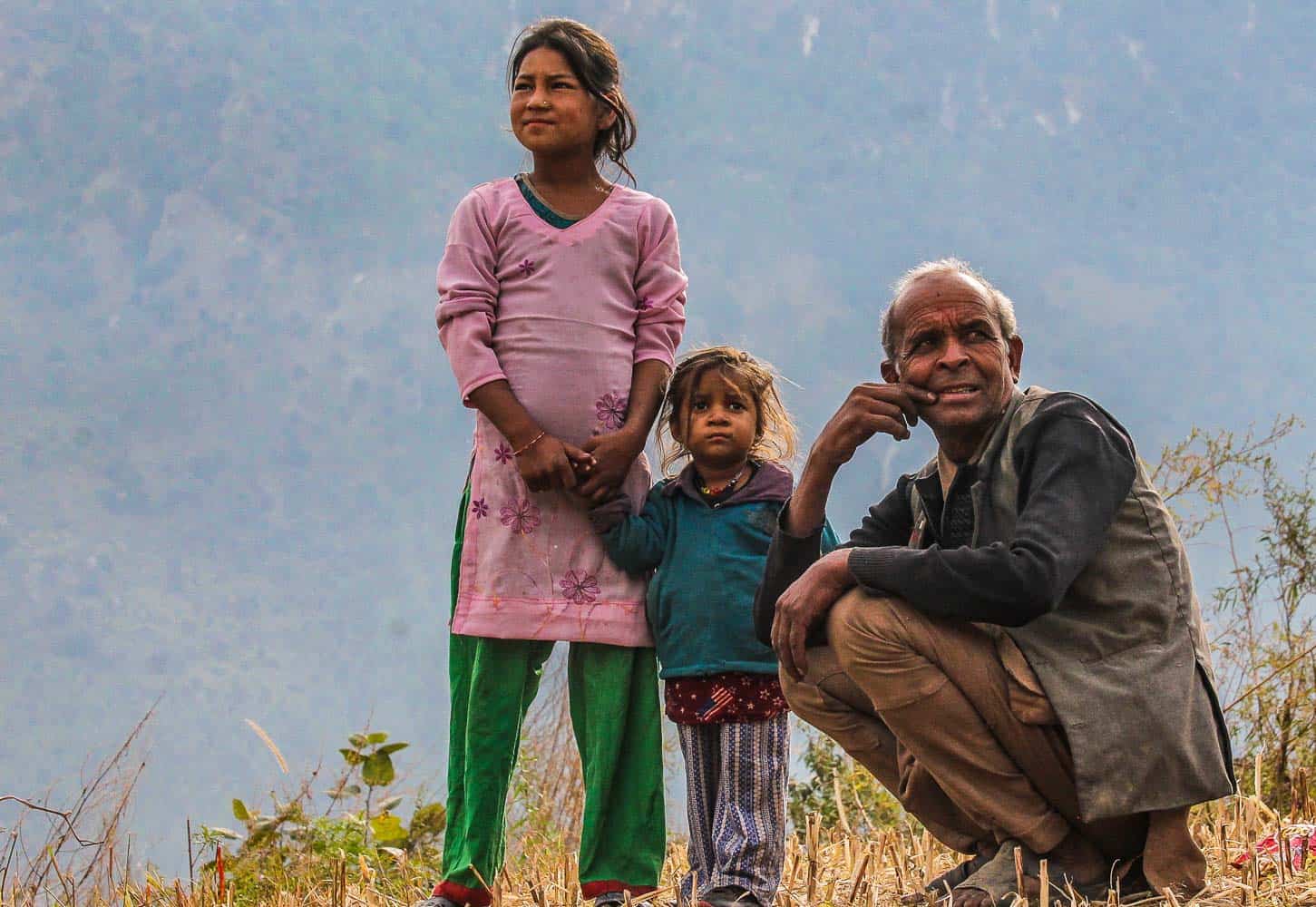
Locals in western Nepal
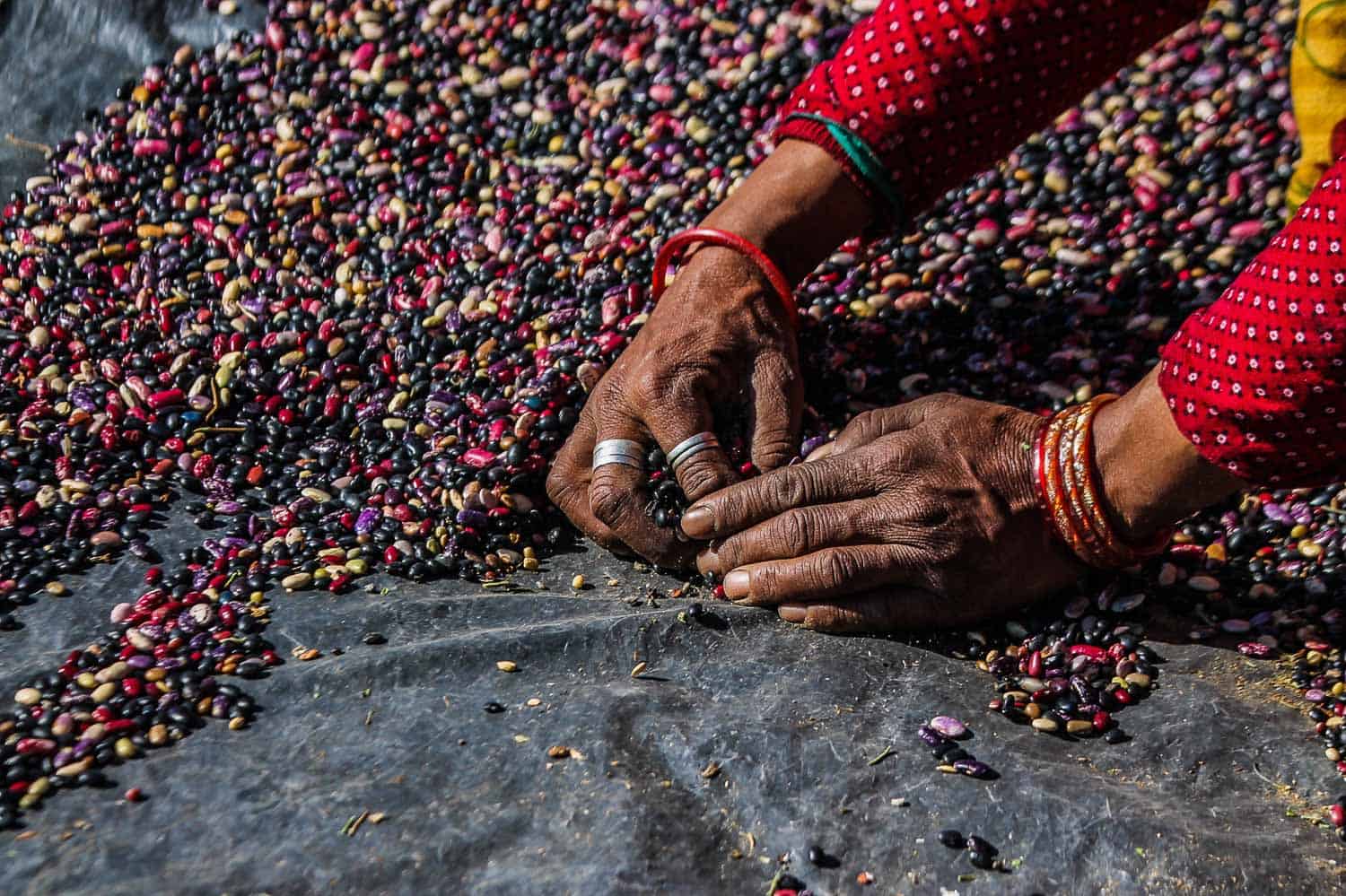
SIGHTINGS + WILDLIFE
There are potentially 20 species of mammal you could see and 214 species of bird, including the commonly-seen Danfe pheasant, the national bird of Nepal, and over 500 kinds of flower and herb.
Rara lake itself hosts otters, fish and waterfowl. The National Park flaunts blue pine, oak and cypress, black juniper and rhododendron forest which houses the clouded leopard, ghoral, the rare red panda, thar, serow, musk deer and Himalayan black bears.
It is also home to more than 200 bird and butterfly species. During the winter months, you will be able to witness the migratory birds from various countries around the world, and during the summer months, Himalayan flowers surround the lake, creating a vibrant landscape.
Trekking Options.
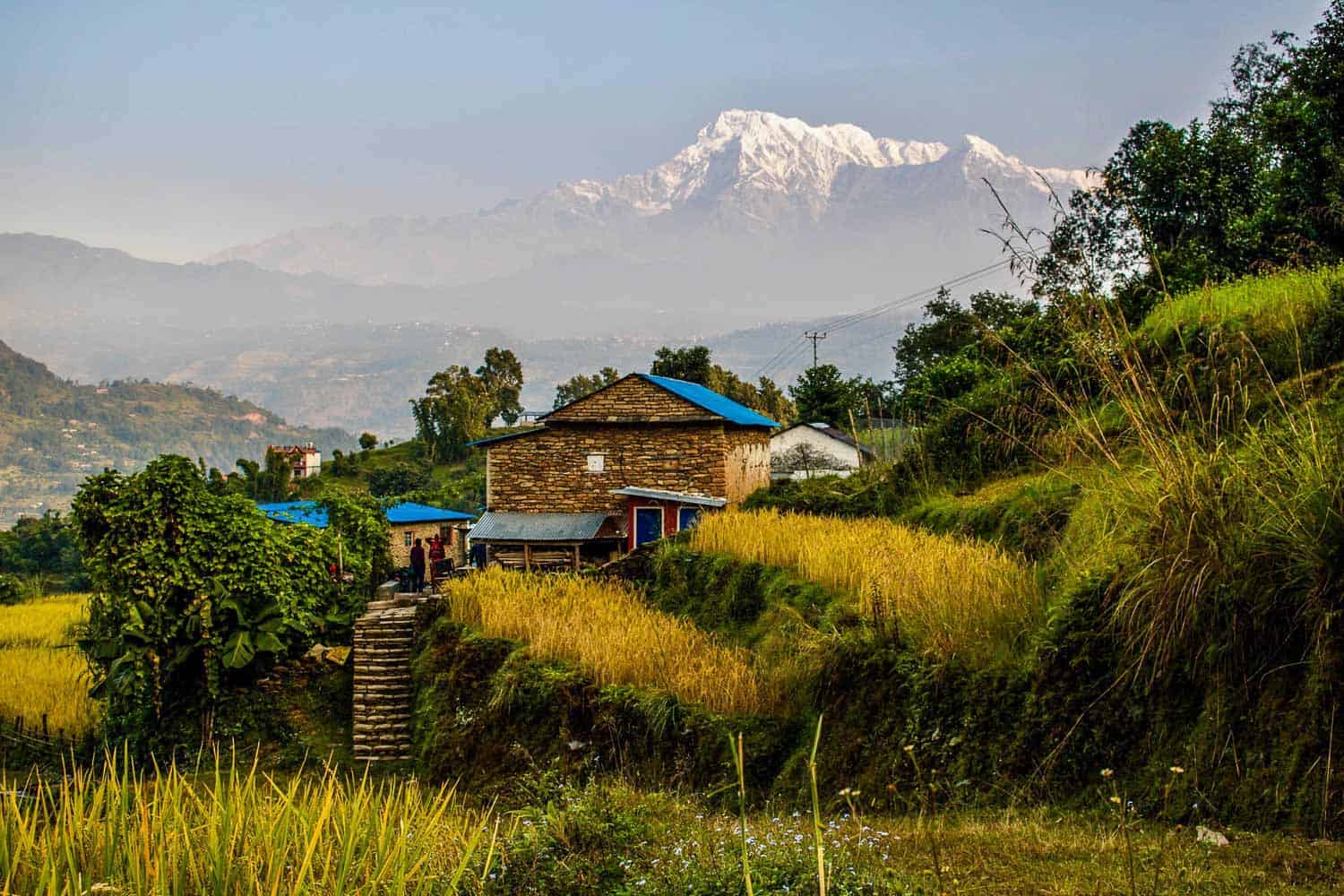
The scenery on the way to Rara Lake
In terms of just hiking time – if you are fast you can complete this trek in a week but it best to enjoy it and you will require time getting to and from.
Otherwise, it will take about two weeks to complete this trek as it can often take two days (even with flights) depending on whether to arrive in Jumla or Talcha.
If you time it right and the weather cooperates, you may be able to have both your flights to/from Kathmandu (stopping in Nepalgunj) on the same day but to add flexibility to your trip, in case things don’t go as planned (which is often the case), count on it taking you two days to get there and back even by flight.
Once you actually arrive, the trek itself can be as short as six days or as long as ten (obviously you can add amazing expansions onto this trek, such as coming from Jumla or continuing onward to lower or upper Dolpo if you have the time and interest.
Beware, Dolpo trekking (while well worth it) requires a whole new set of permits and a guide (see Permits in the “Ultimate Hike in Nepal: 22 Days Off the Beaten Path” article for more information)
My suggestion is to start at Jumla because the villages surrounding it are beautiful and isolated, filled with hilly terrain, industrious locals, valley vistas and an abundance of orchards.
It is only a four-day walk from Jumla to Rara lake following the salt route to Humla. Through very arid landscapes, shadowed by the Annapurna and Dhaulagiri ranges, you can catch views of Chucchemara Peak, Ruma Kand and Malika Kand.
General Itinireary to Rara Lake.
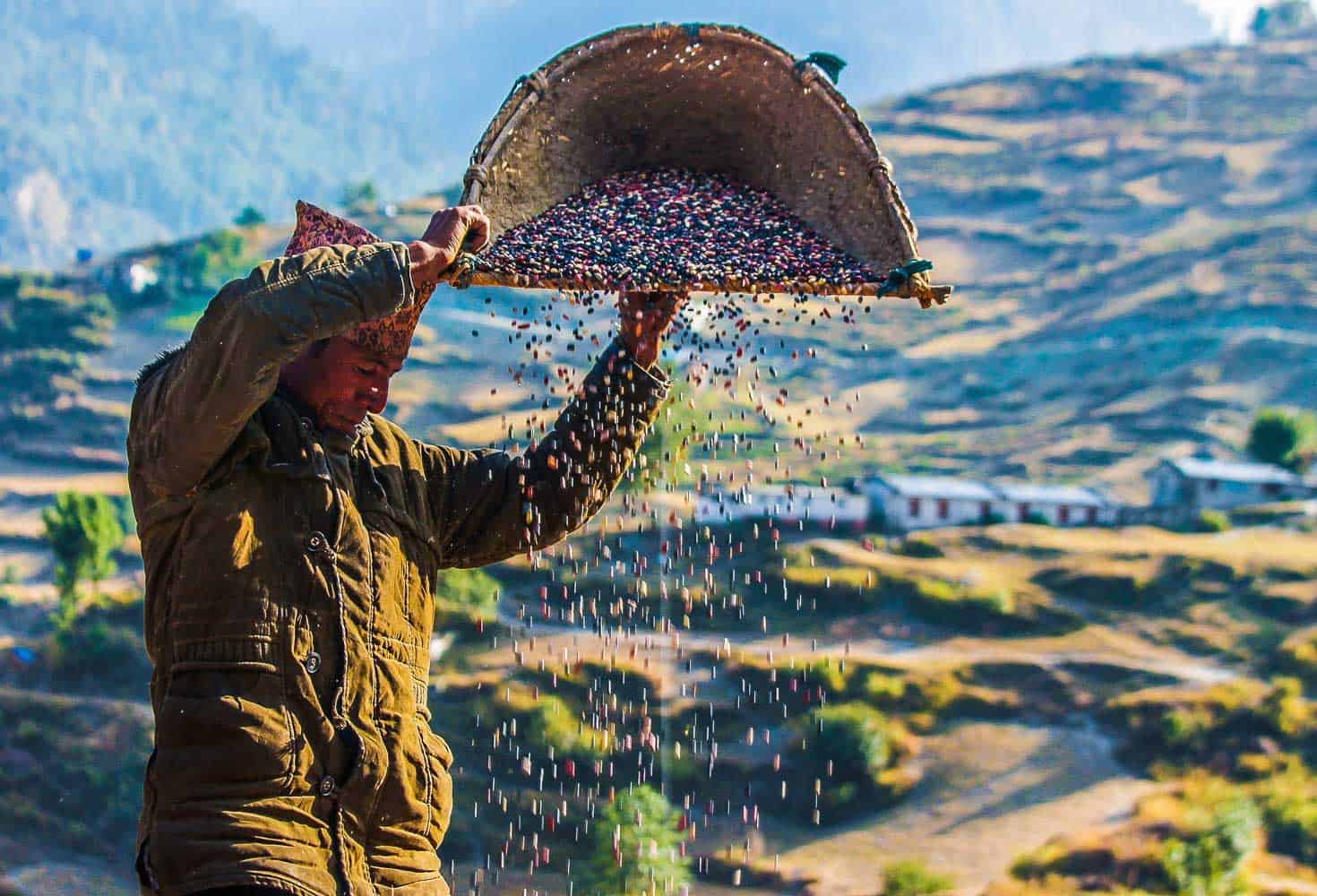
Harvest season
NOTE: If doing the trek without a guide – ensure you have a quality map – there are plenty available.
The trail is fairly well defined and locals will help you along the way when you see them but in case you don’t, make sure you have a map and make sure you add some time onto the trekking estimates locals tell you as they are accustomed to walking the trails and often move faster (and sometimes with less gear) than a trekker.
And be prepared for something called “Nepali flat” in which the trails continuously go up and down even if they don’t gain or lose much altitude.
NOTE: Route one and its options is a little more suited towards campers (tea houses are still available) and independent trekkers while the second options is a little more structured with greater tea house options depending on what you need and what your preferences are.

Locals
Day 1: Jumla (2370m) – Patmara (2920m) 5-6 hours.
Urthu – a town near Jumla that has sweeping vistas of Jumla valley.
After arriving in Jumla start walking for 5-6 hours towards Padmara/Patmara (2920m), first starting at the flat trail, passing pine forest, hills and several local villages before beginning the steeper ascent to Padmara/Patmara where you can camp for the night.
If you have time to explore, you will find that Patmara is a fairly large village laden with chortens, prayer flags, mani walls and temples dedicated to Hindu God and Goddess.
Due to its proximity to Tibet, you will find inhabitants here following either the Buddhist or Hindu religions.
OR…
To take the opposite route, trek from Jumla to Chere Chaur (3055 m/10,023 ft) to arrive for tea house accommodations.
Day 2: Patmara (2920m) – Bhargaon (2690m) 6-7 hours.
When you leave Patmara/Padmara, head onwards through Khali Langa pass (3050m). The trails will descend gently until you reach Nyawer. En route, you will arrive at a log bridge crossing Shij Khola, (Khola means river) which you will take before climbing to Bumra – your stop for the evening.
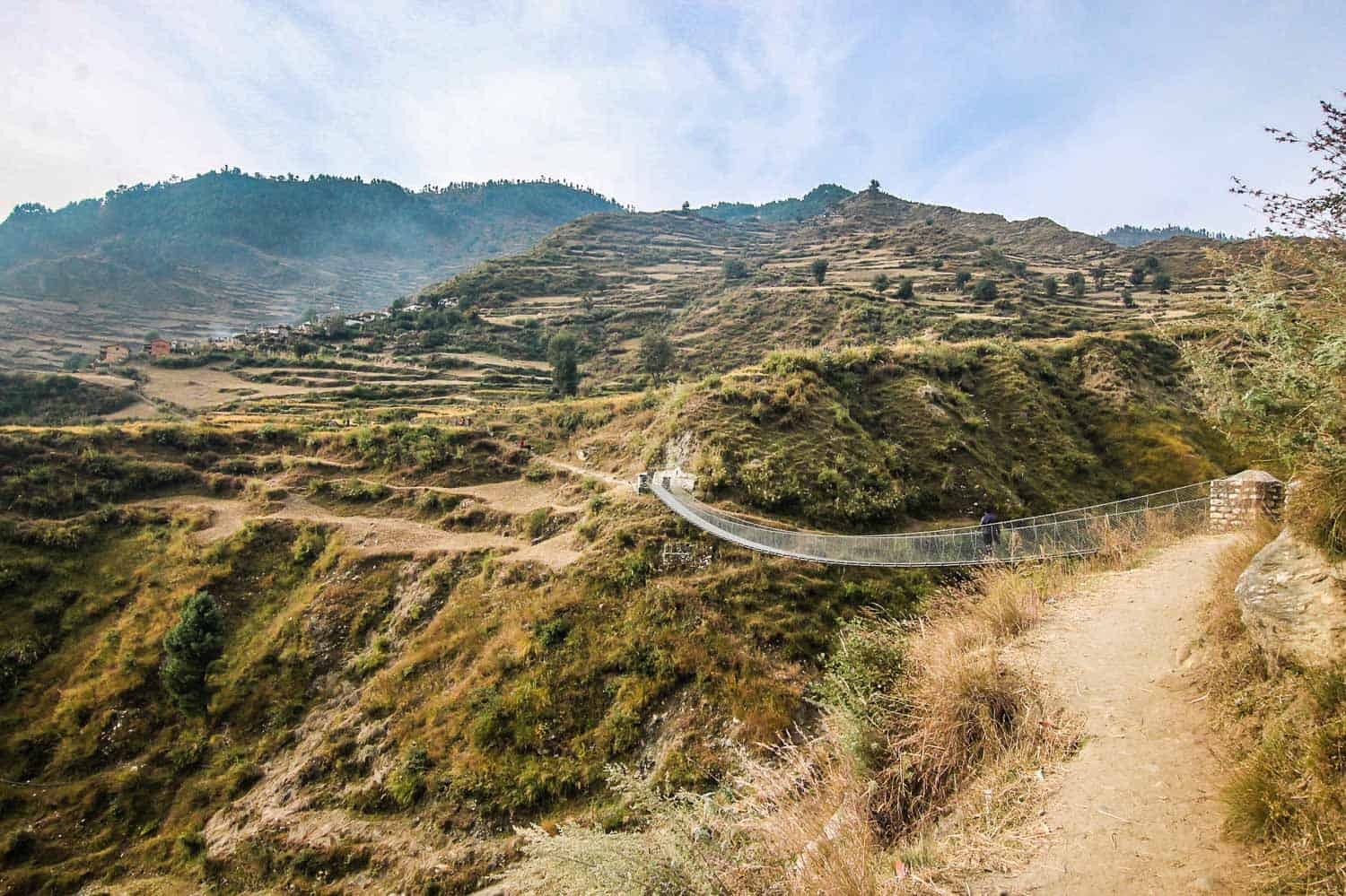
The trail on the way to Rara Lake
OR… You can arrive at Bharagaon, which is thirty minutes further on. It is a relatively big village with monasteries, chortens and prayer flags to add a Buddhist flare to the atmosphere.
OR…
For the reverse route, leave from Chere Chaur to Chalachaur (2980 m/9,777 ft), trekking 5-6 hrs with tea house accommodation available when you arrive (or booked in advance just to be sure.)
Day 3: Bhargaon or Bumra (2690m) – Pina (2380m) 6-7 hours.
(Leaving Bumra, you will hike about an hour and a half to Bhargaon,). Travelling north from Bhargaon in the direction of Ghauha Khola on a gentle ascent, cross the river and continue the ascent to Chautha.
Along the way, you will reach the Rare Lake checkpoint at Bhulbule (3130m). You have to pay the park entrance fee here (see National Park Fees for more information).
The trail to Ghurchi La Pass (3460m) ascends steeply before continuing steeply downhill all the way to Pina (Pine) where you will stay overnight. The trails you move through gently ascend until you cross a suspension bridge.
OR…
For the reverse route, hike from Chalachaur to Sinja Valley (2490 m/ 8167 ft) where you will be able to access tea house accommodation there.
Day 4: Pina (2380m) – Gumgarhi (2580m) 6-7 hours.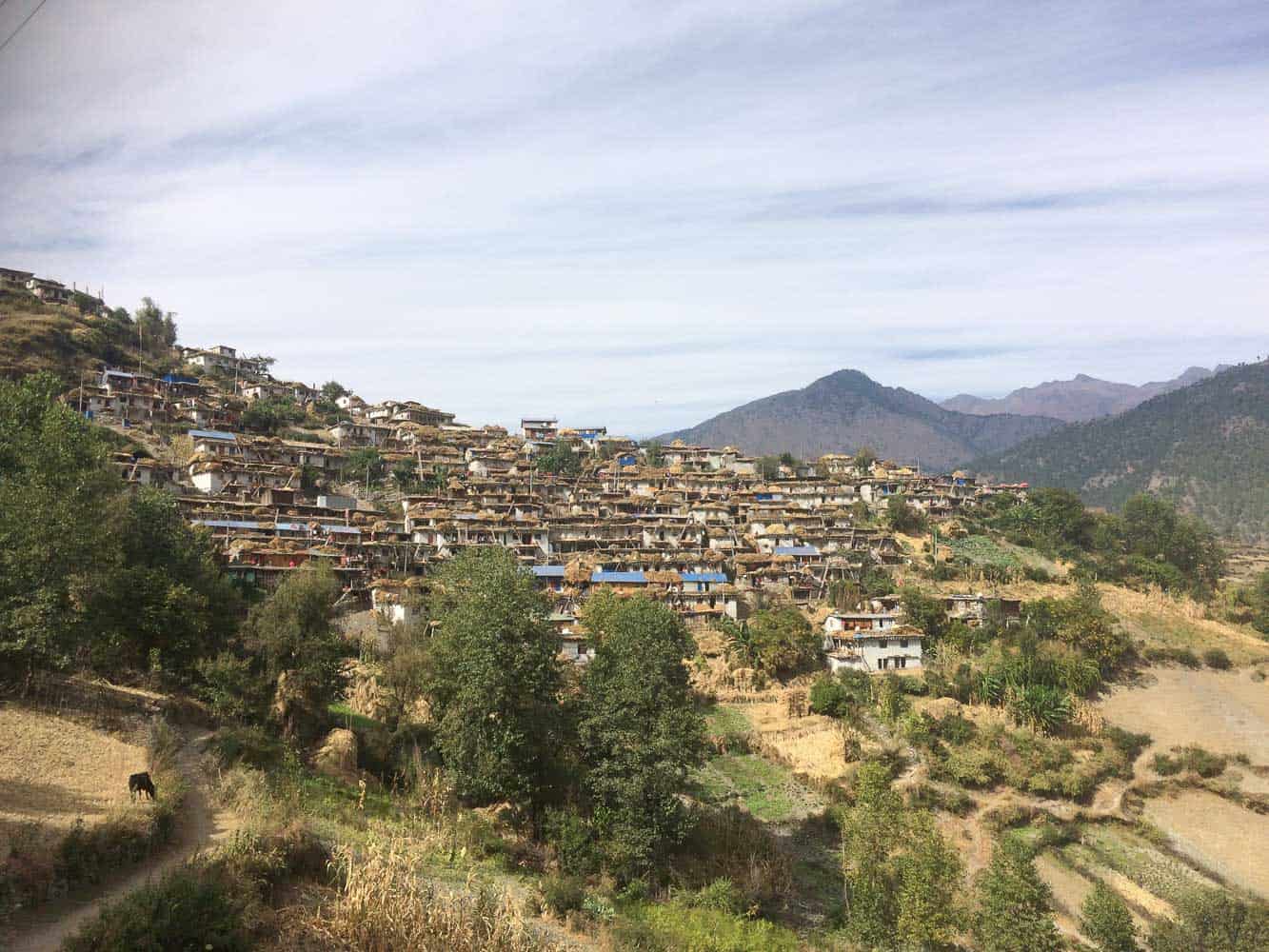
From Pine (Pina), you will see on your map that Rara Lake is within your reach, only 10 kilometres west of Pine (Pina). Many claim this as the most beautiful leg of the trek due to the surrounding villages and views. In the morning you will cross a wooden bridge over Jhari Khola (more stream than river), following a consistently upward trail, with occasional downhill sections.
This section boasts a few forest animals such as deer and pheasants and several bird species as well as pine, juniper, rhododendron, oak tree species and several flora and fauna species. If you have a tent, you can set up camp somewhere flat and beautiful with a nearby water source, or you can continue until you arrive in Gumgarhi, a mainly Sherpa village of Gurung peoples and other castes.
Or for the reverse route travel from Sinja to Ghorosingha (3050 m/10007 ft) arriving at tea house accommodations in Ghorosingha.
Day 5: Gumgarhi (2580m) – Rara Lake (3060m) 5-6 hours.
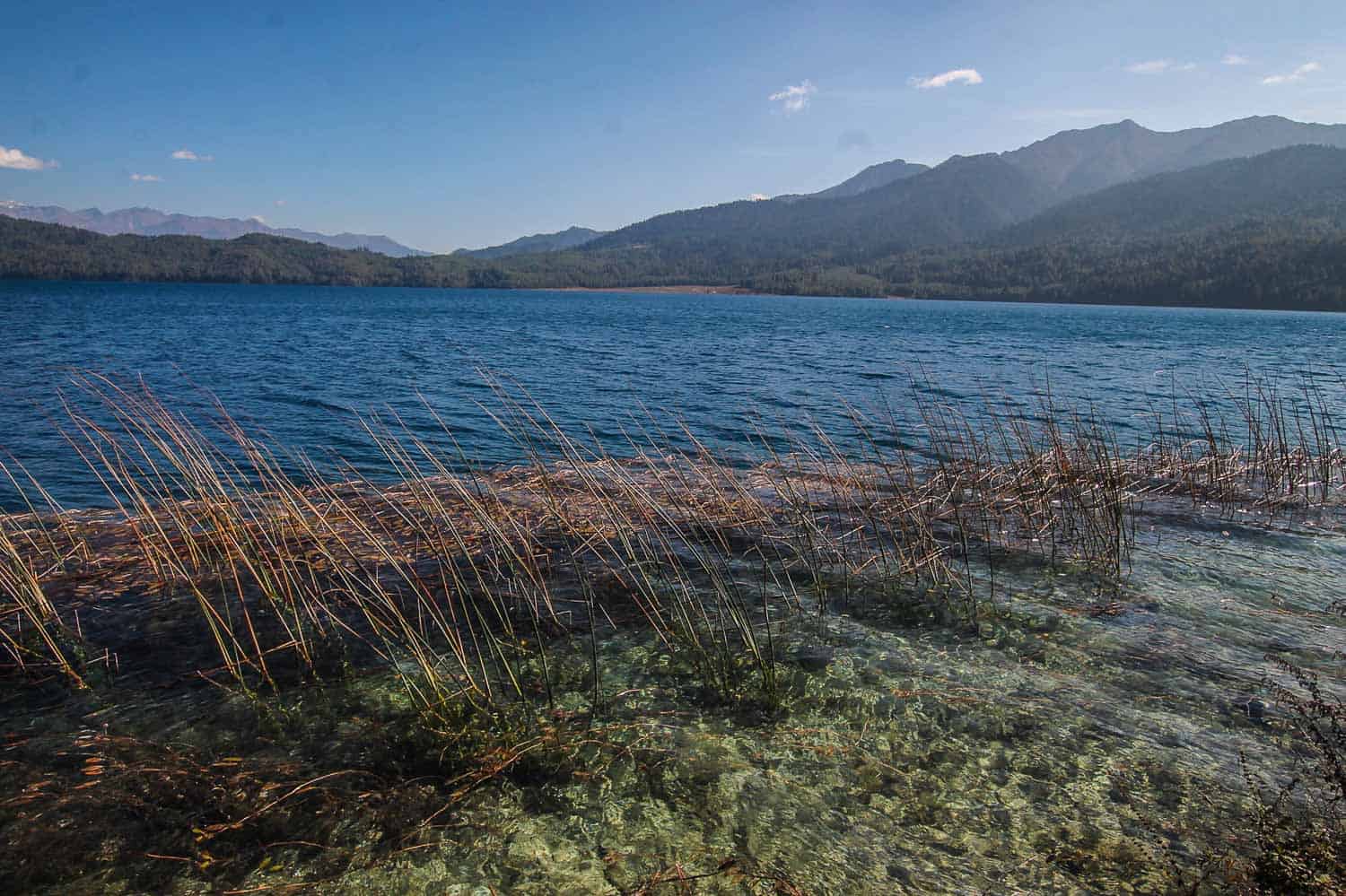
rara lake
The section across villages and through forests is mostly downhill, but there is an ascending part that goes on for some distance, and the path will lead you to Rara, the biggest lake of Nepal.
Or for the reverse route, hike from Ghorosingha to Rara Lake (3010 m/9876 ft) which will take around 6-7 hrs, and tea house accommodations will be accessible.
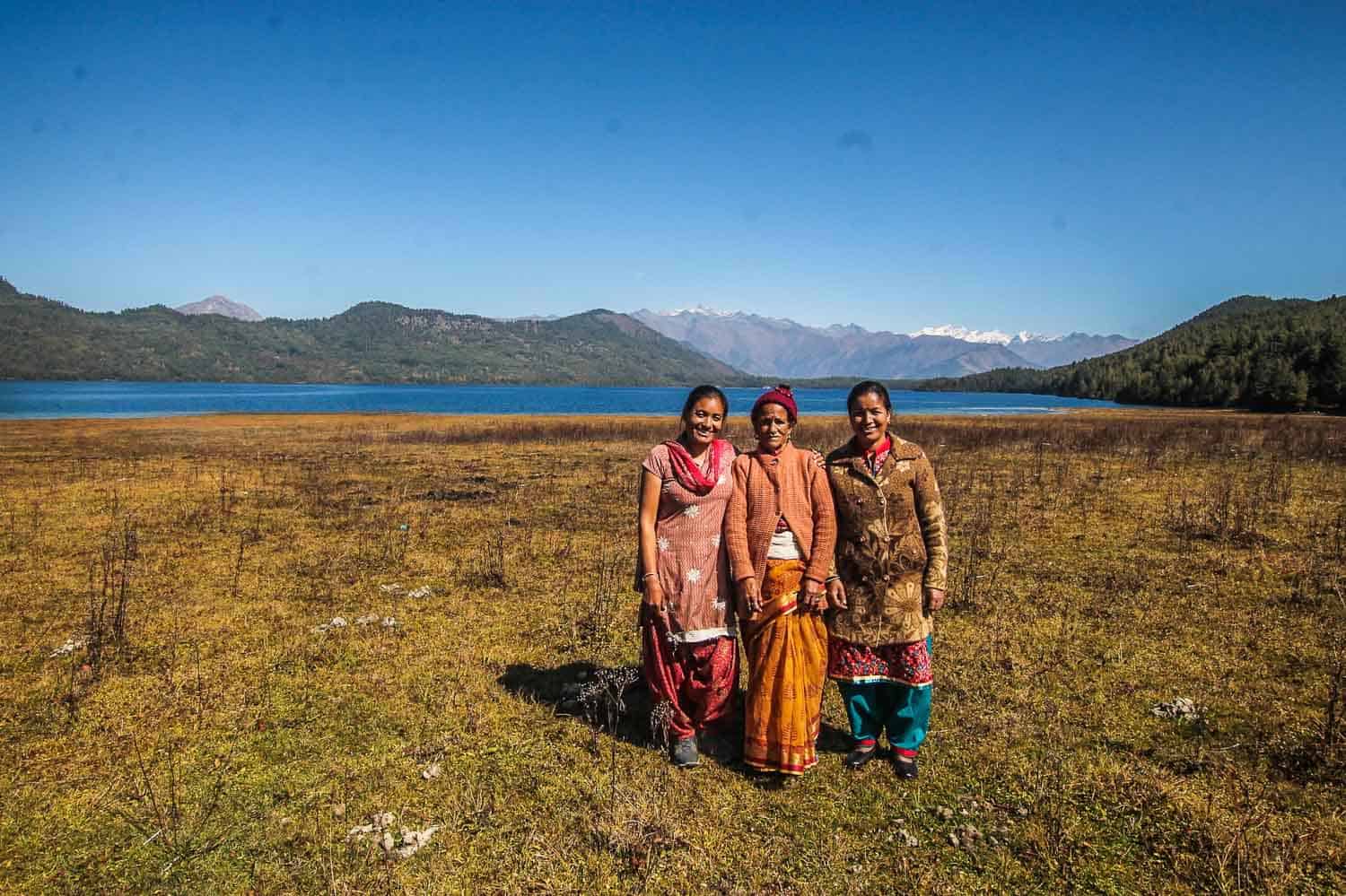
Locals in front of Rara Lake
Day 6: Rest at Rara Lake (3060m).
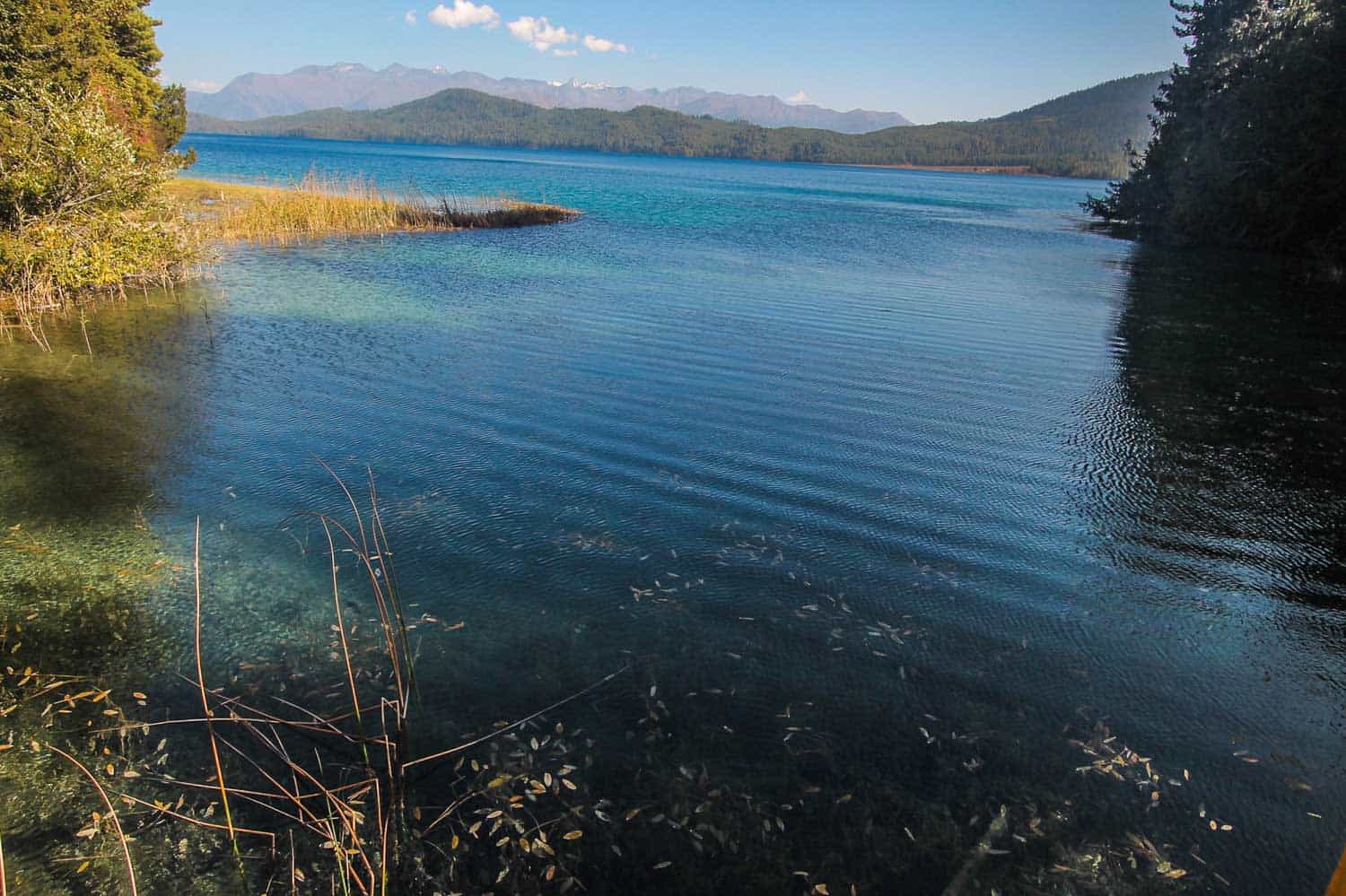
Rara Lake
Whether you need to rest and relax or want to explore and discover the depth of culture and beauty of the area, you’ll have plenty of time and if one day here is not enough and you have the time, tack on an extra day.
It takes around 8 hours to get around the lake if you want to walk and explore or you can also go boating on the lake if you want something shorter and more leisurely. There should be no need to change campsites, just make sure you arrange two nights, so you don’t have to move.
Or for the reverse route, explore Rara Lake for the day (it take 8 hrs to walk around it), delve into the culture, talk to the locals or the surrounding nature. Tea house accommodation will be available here.
Day 7: Rara Lake (3060m) – Jhari (2500m) 7 hours.
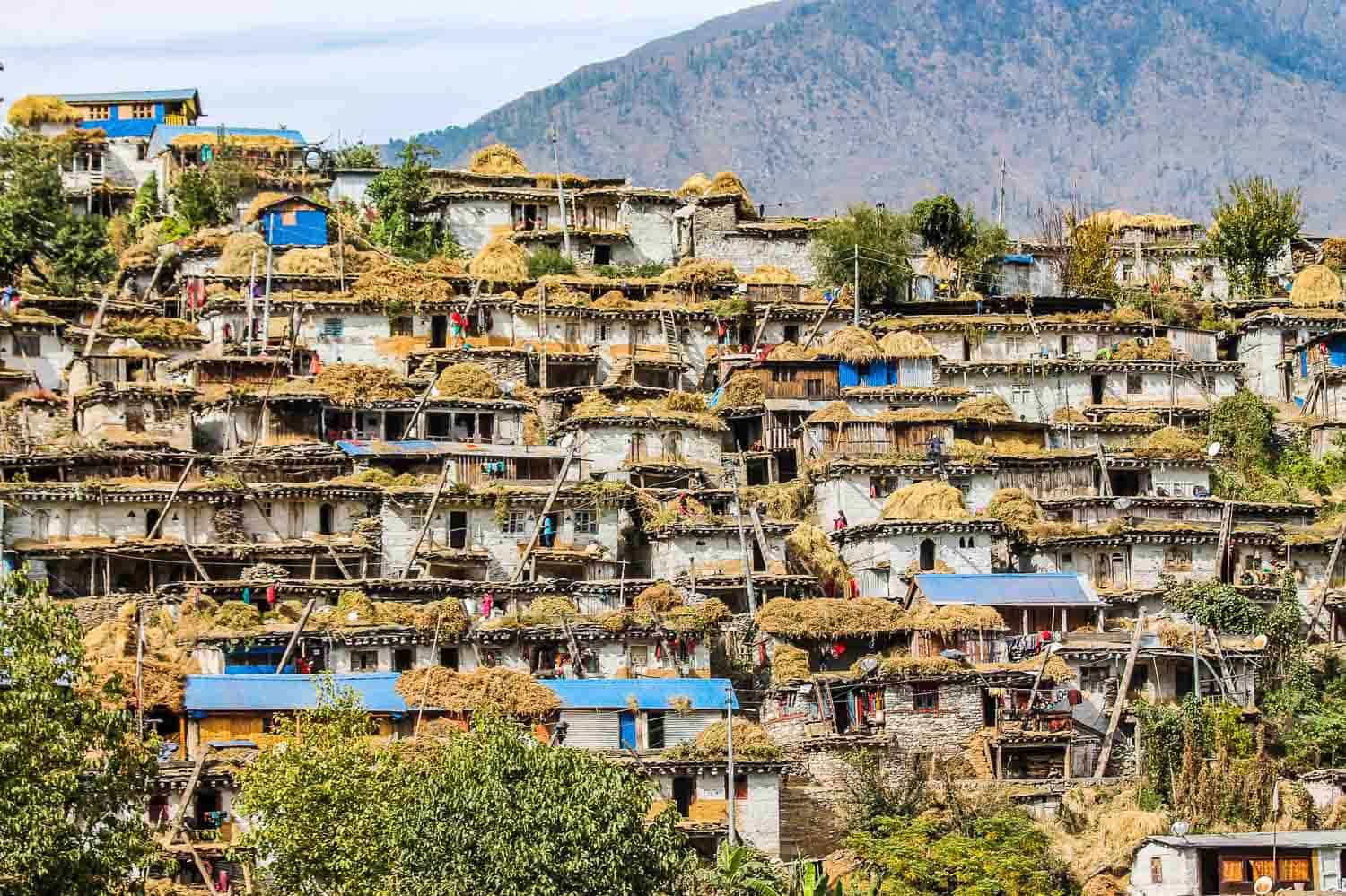
Local village on the way
To get to Jhari, trek the steep descent through forests until you come to a wooden bridge over the Jhari Khola which boasts several villages. Jhari is small and mostly occupied by Gurung who are similar in culture to the Tibetan people.
OR…
You can head downstream of Khatyar Gad for an hour in order to cross the Murma bridge and from here, trek south through the forest until you arrive at Ghorasain, where you could set camp for the night.
OR…
For the reverse route, hike from Rara Lake to Pina (Pine) (2440 m/ 8006 ft) which will take around 4-5 hrs. Tea house accommodation is available here.
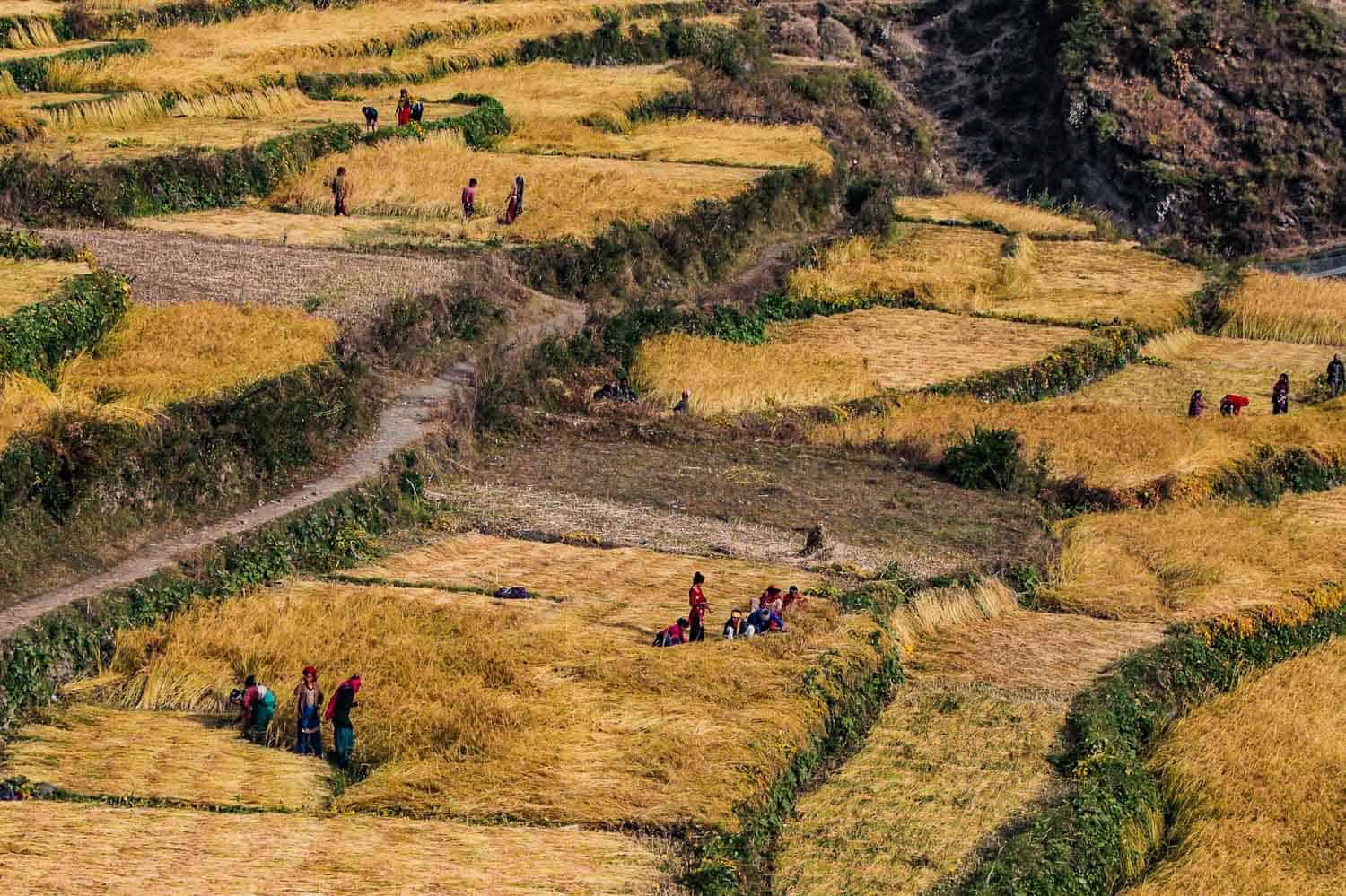
Harvest season in north-west Nepal
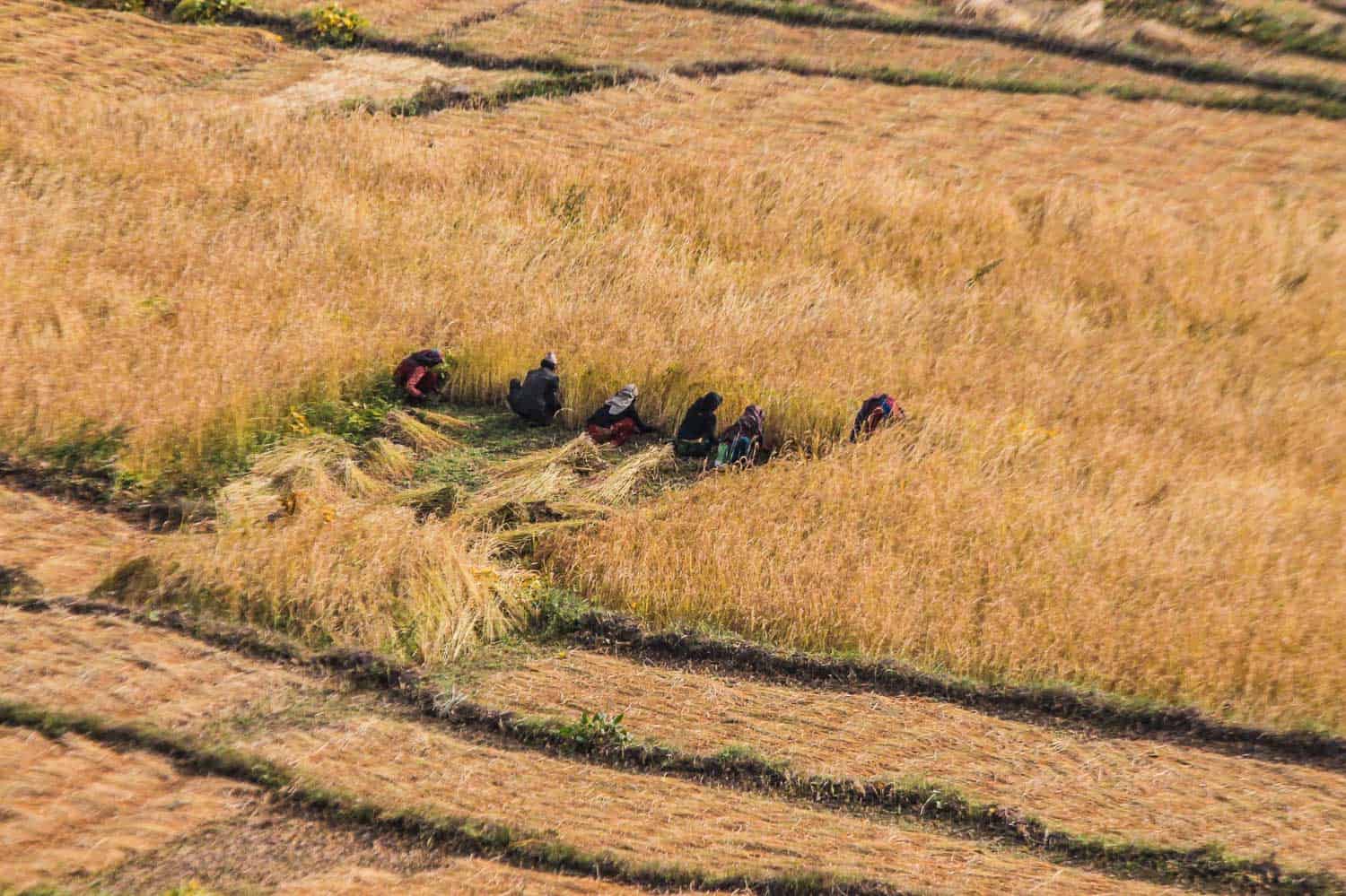
Harvest season
Day 8: Jhari (2500m) or Ghorasain – Bhargaon (2690m) 6 hours.
The route begins with a descent and after a few kilometres, ascends until you cross Ghurchi La Pass (3460m). From here the trail continues on “Nepali Flat” rolling up and down before descending to Bhargaon.
OR…
For a more scenic route being the Diyabala Danda Trek south, which amounts to an hour of trekking through an abundant forest. On this route you will then head towards Sinja, to stay overnight instead of Bhargaon.
OR…
For the reverse route, travel Pina (Pine) to Bumra (2850 m/9351 ft) which will take somewhere between 5-6 hrs. Again, tea houses are available.
Day 9: Bhargaon (2690m) or Sinja – Patmara (2920m) 6 hours.
Leaving Bhargaon, steeply descend to Khari La Pass until the route turns steeply down to Cherry/Chere (2009m). The trail from here moves through gentle flats all the way to Padmara/Patmara.
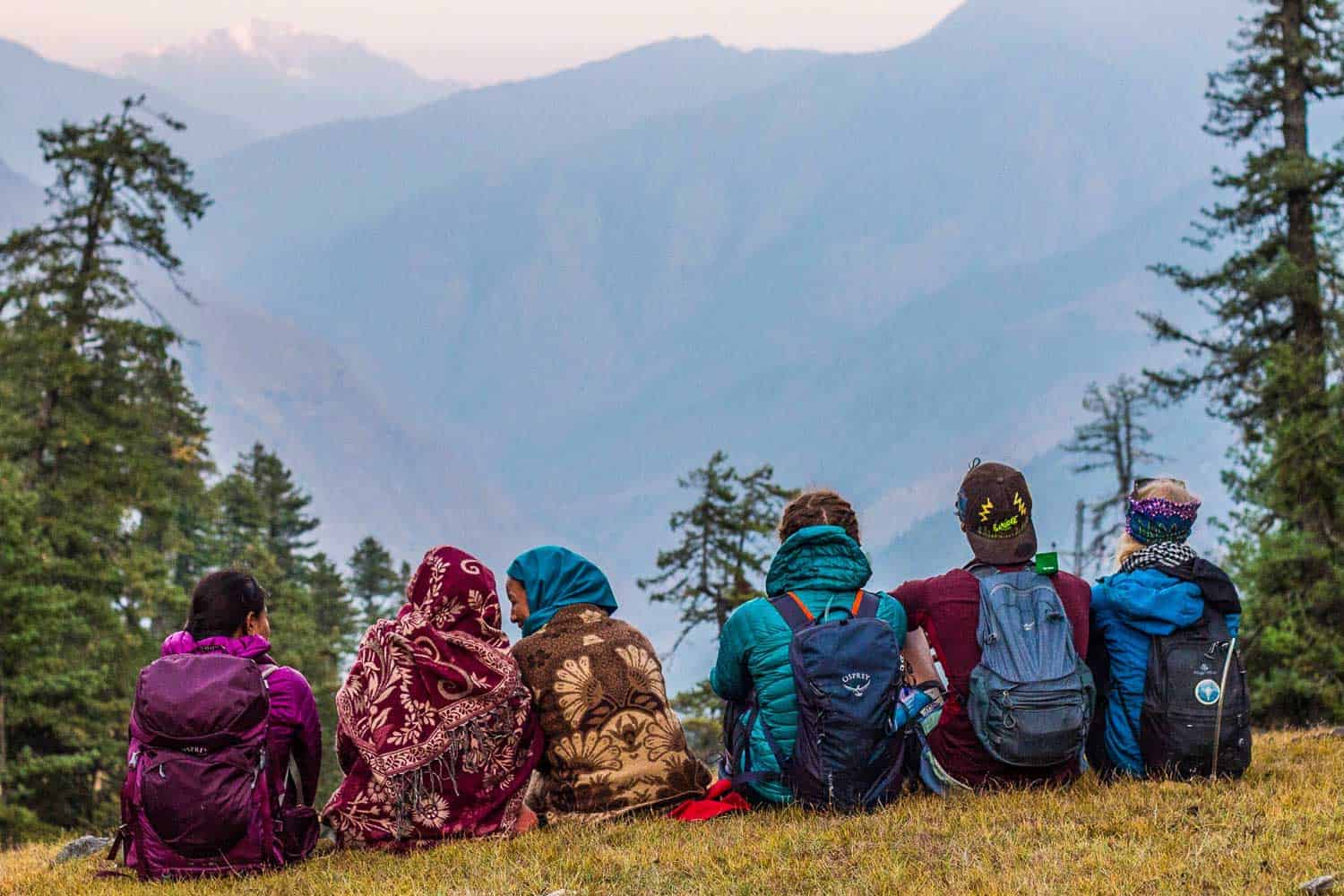
Enjoying the view
From Sinja, you cross Sinja Khola over a log bridge and follow the stream east. Following this crossing, you will trek a 9,400 ft ridge and descend to Chere Chaur through a pleasant wide meadow and stay for the night (or you can continue on to Padmara/Patmara as above where tea house accommodations are available)
Day 10: Patmara (2920m) – Jumla (2370m) 5 hours.
Walking from Chere Chaur or Patmara/Padmara to Jumla is pleasurable and will not require much effort as there is little ascent or descent and you will enjoy some beautiful views of the green hill, sharp ridges, lush forests, and charming villages.
OR…
For the reverse route, Bumra to Jumla (2540 m/8334 ft) will take you 5-6 hrs in which you can settle into a guesthouse in Jumla to rest from your journey.
Day 11: Jumla onward.
You can return from Jumla to Kathmandu, or to another destination in Nepal.
OR…
You can begin the Phoksundo section of Dolpo, and/or the upper or lower Dolpo circuits for longer trekking options.
What to pack for Rara Lake.
It can be cold and dry and leading right into winter if you go in September, October or November but you may be surprised by a hot streak and at the very least some warm weather so layers of clothing will be key.
You will likely want sleeping clothes separate from hiking clothes as there is not much access to shower facilities (though you will be hiking to a lake) and having something warm to change into at night may come in handy. A basic packing list can be found below: click here for a complete packing list for hiking in Nepal.
1-2 T-shirts/tank tops (breathable is best)
Two warm long-sleeve shirts (one for sleeping, one for hiking)
Two pair of hiking socks
Two pair of compression socks (for inside hiking socks – they are also excellent at keeping leeches out)
One pair of warm socks for the night
One rain jacket or poncho
One warm down Jacket for night
2-3 Buffs to use as a scarf, eye cover, bandana, toque etc.
One pair of hiking pants (quick dry is best)
One pair Long Johns/sleeping pants (or for really cold hiking days which is unlikely)
One pair of hiking boots
One pair flip flops
One headlamp or flashlight
One pair of sunglasses
One sleeping Bag (optional if you are staying in guesthouses but almost always worth bringing your own)
One backpack Rain Cover (try lining the inside of your backpack with a garbage bag)
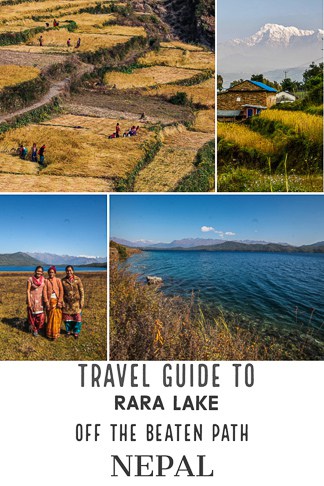
Travel guide to Rara Lake and Mugu District (once part of the Malla Kingdom and of the Karnali River Basin) is in the remote northwest part of Nepal, and it is ramping up to be Nepal newest backpacker’s destination.
Basic Toiletries: toothbrush, toothpaste, hand sanitizer, Ibuprofen, etc.
First Aid: basic first aid supplies, blister kit, leatherman/knife, rehydration salts, antibiotics, (for severe diarrhea or other emergencies)
Electronics: phone jacks, extra camera batteries, charging cords, etc.
Miscellaneous: Ziplock Bags, bungee cord or rope
For Campers:
Spoon/fork
Camp stove
Stove gas
Pots/pans
2-3 Lighters
One tube of shoe repair glue
One tent (one person can carry the poles/pegs etc. the other carry the material)
NOTE: 1 small gas can will cover you two weeks – if you want to make tea or coffee regularly you can consider a bigger canister.
Adventure gear For Campers
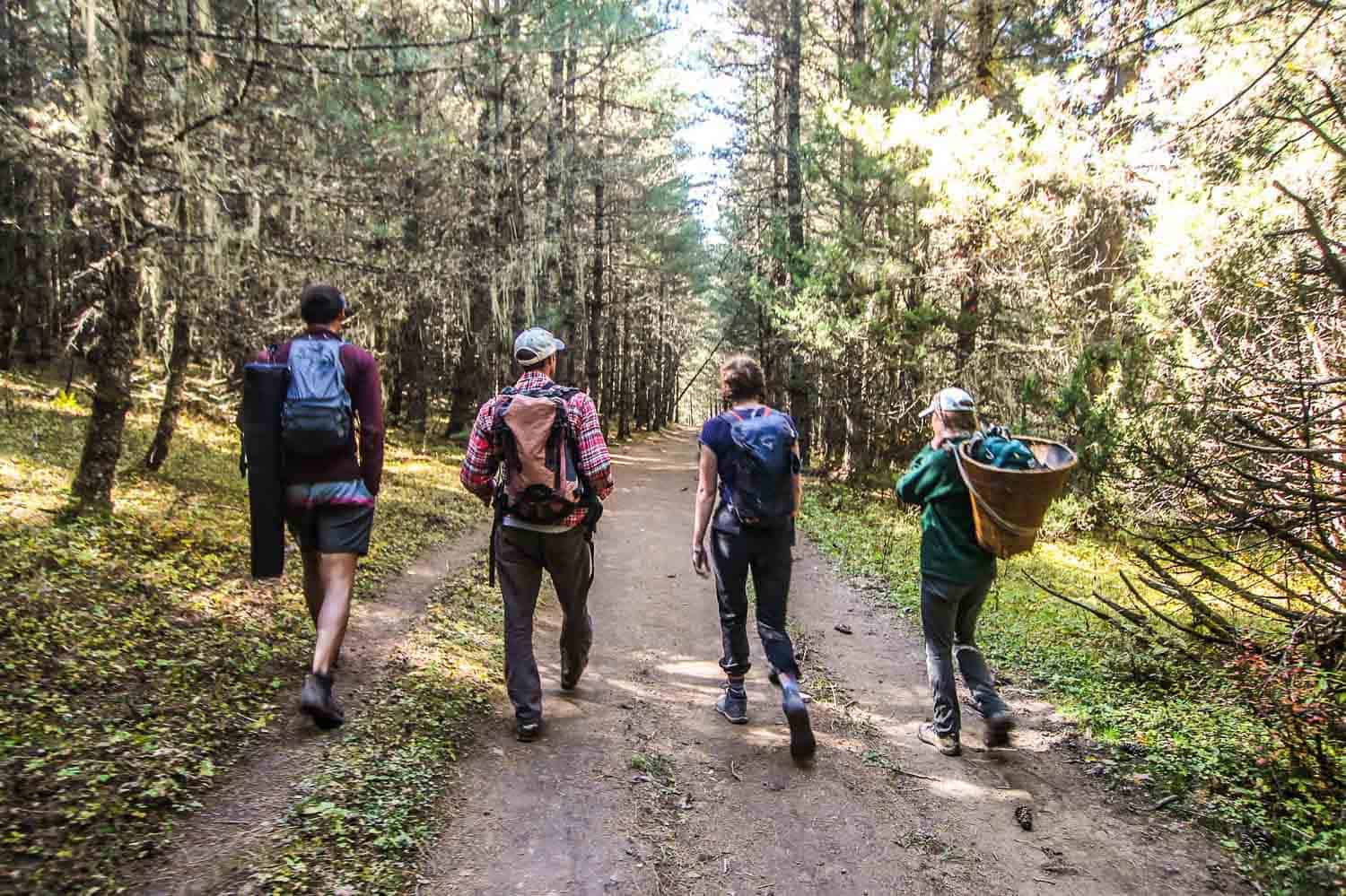
On the way to Rara Lake
Renting a tent is 500 Rupees/day ($4.50 USD at the time of writing) from companies in Pokhara, the price may be different in Kathmandu.
If you are interested in buying your own tent, there are very few shops that sell them in Pokhara so you may have to spend half a day popping in and out of shops to find someone who sells them – I bought mine in a small shop for 4500 ($40 USD), but your best bet is to do all of this in Kathmandu where the selection and quality are greater.
You can bring your own tent on your flight over which is recommended if you have the opportunity.
Small stove heads cost about 800 Rupees ($7 USD), and large canisters of gas are 1000 ($9 USD) a piece or 500 ($4.50) for smaller canisters. A “200 Set” of camping stove pots and pans is 500-800 rupees.
If you buy more items together such as a foam mattress (100R – $0.80), a sleeping bag liner (800R – $7 USD), stove head, gas and pots you can negotiate a better price.
Beware of buying sleeping bags in Nepal. It is not the kind of item you want to find out is a knock off, and it is hard to test without the weather to expose its authenticity.
There are legitimate outdoor stores in Kathmandu where you can purchase a warm sleeping bag if you need to and if you get cold at night easily, you can buy a fleece sleeping bag liner for about $6-8. If you do camp, you may need to pay a fee of some kind to pitch your tent at some spots.
Food: For Campers
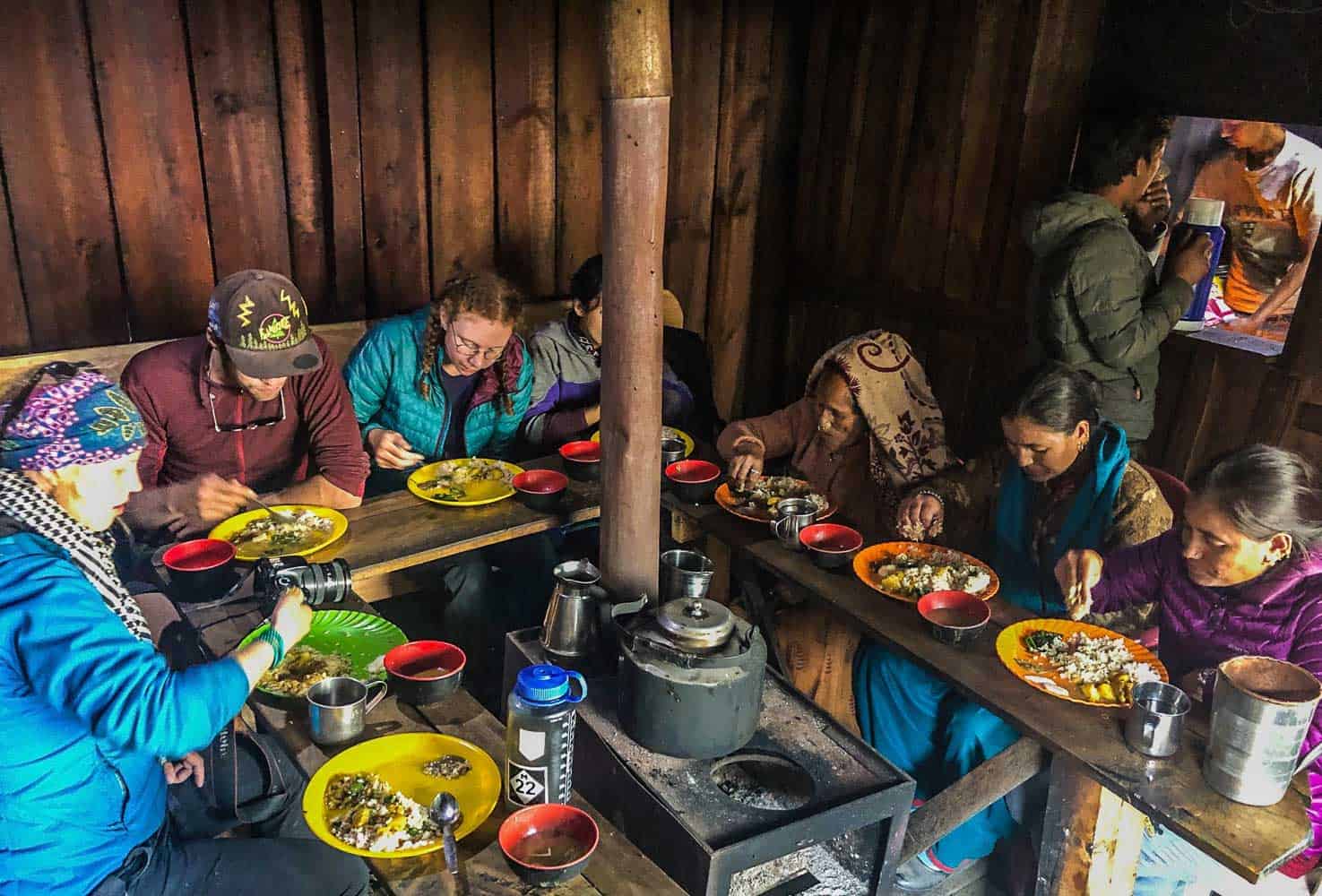
Having local food
For Two People for ten days (if you are not eating any meals at the teahouses – if you are a plate of dal bhat is about $4-5 but you can negotiate, especially if you are staying at that teahouse)
20 Ziplock Bags of Muesli (I added oatmeal in, goji berries, dried apples, various nuts, chocolate, and a scoop of peanut butter – protein powder would be a great thing to add if you have it)
1 small tub of Peanut butter (or 3 small ones) – it was worth the weight to have some protein
2 boxes of granola bars
1 bag of dried chickpeas
1 bag of moon daal
10 small Ziplock bags of various nuts and dark chocolate
2 KitKat and 4 snickers (save them for the lower altitudes when you are ravenous)
1 bag of dried apples (Jumla has orchards and dried apples can be easily found)
10 Dried soup packets (we ended up combining these with chowchow noodles)
10 Chowchow noodles
1 bag pasta (can fill a plastic water bottle with tomato sauce of just use dried soup mix)
1 package of papads (these were the best toasted with our soup and chowchow and we wished I’d bought 2 packs)
1 packet of cookies/crackers
4 fresh apples (bought in Jomsom which lasted us the first five days and the dried apples for later)
TOTAL: $60
NOTE: We picked up fresh eggs that we boiled from villages along the way and usually bought a six at a time so that we could have more protein in the afternoon if needed.
NOTE: If you are coming from the west and can bring dried mango and dried kiwi, they are great fuel along the way – also bring the Ener-C or Emergen-C vitamin and rehydration packets as they add important nutrients.
Power bars would also be worthwhile, and wraps would have been an easy way to get the peanut butter down. My list is made up of what I was able to access in Pokhara, so I was limited in a lot of ways with food and gear)

Matthias
Sunday 14th of May 2023
Hello! Thank you for sharing all this, it's really useful. I have one question: in Nepalganj, where did you find the jeep to go to Jumla for 2000 rupees? I'm struggling to find it. Thank you, regards.